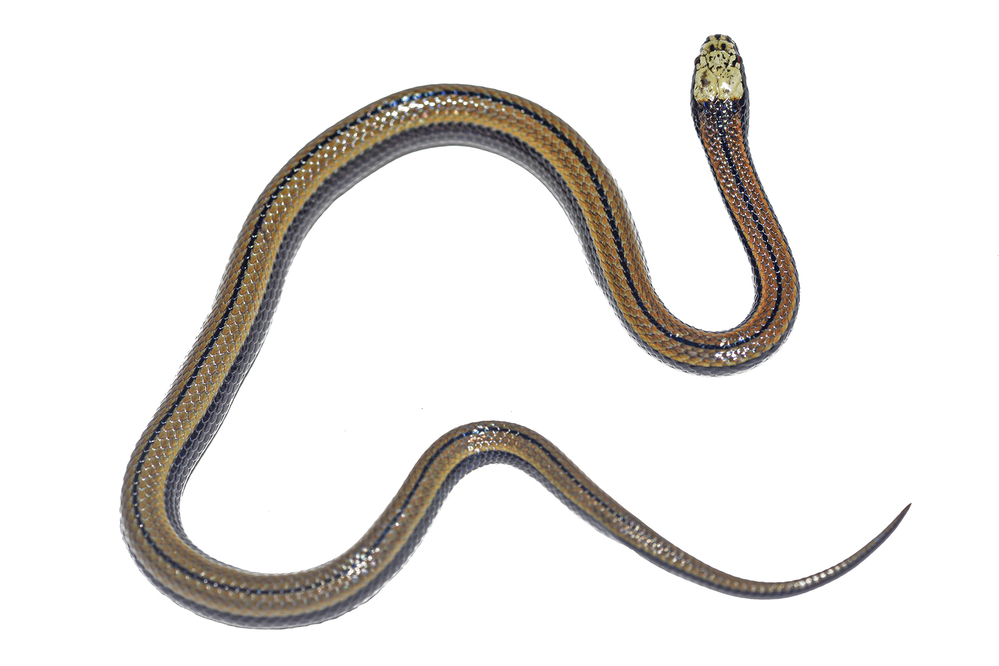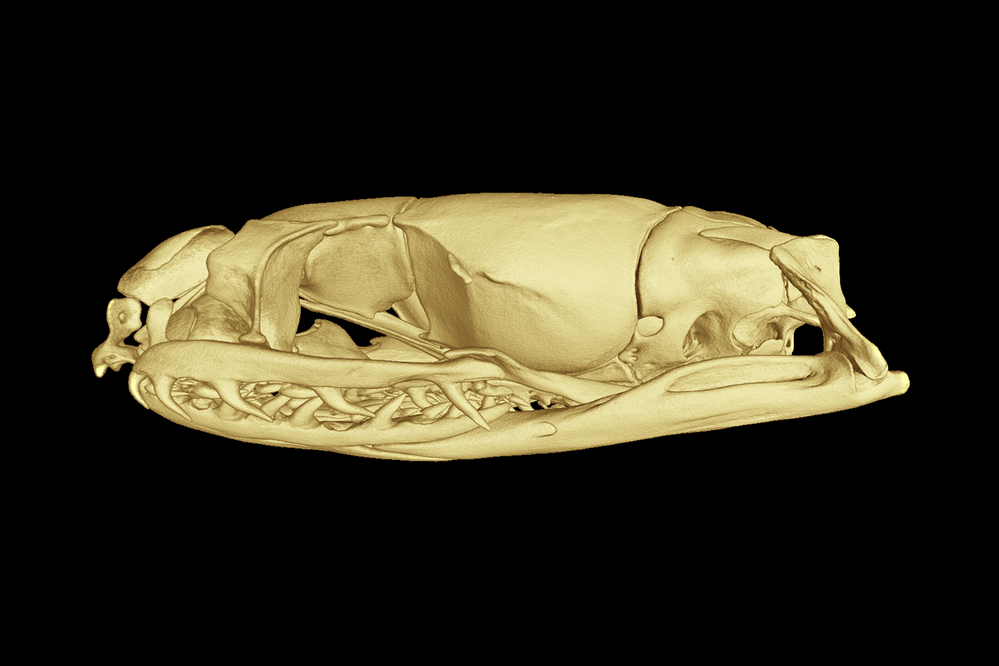
Paikwaophis kruki. Photo by D. B. Means
Paikwaophis kruki, which is a small snake specimen recently collected during a National Geographic expedition to a remote cloud forest in the highlands of western Guyana, was sent to Prof. Philippe Kok (Department of Ecology and Vertebrate Zoology) for identification and further analyses. After careful examination of the specimen’s external morphology and three-dimensional reconstruction of its skeleton (based on µCT-scanning), as well as molecular analyses, the small snake proved to belong to an undescribed genus in the family Dipsadidae. This large snake family contains about 100 genera and more than 800 species, mostly found in the Neotropical region.
 Three-dimensional model of the skull of Paikwaophis kruki. Image by P. J. R. Kok
Three-dimensional model of the skull of Paikwaophis kruki. Image by P. J. R. Kok
Prof. Kok and his American colleague Dr D. B. Means (who collected the snake in 2021) named the new genus Paikwaophis, which refers to the locality where the specimen was collected (close to the Paikwa River in western Guyana). The species name kruki honours Prof. Andrzej Kruk, Dean of the Faculty of Biology and Environmental Protection, for “his friendship and influential contribution in enhancing the quality of research at the University of Lodz”.
A little snake, a big discovery
The new snake is tiny (an immature specimen barely reaching 180 mm long), has beautiful reddish eyes and is intriguing in many ways. It is only known from a single specimen found crawling among the leaf litter over a peaty soil in a remote and pristine cloud forest sitting between two sandstone table mountains (tepuis): Roraima-tepui and Wei-Assipu-tepui.
 Philippe Kok on the summit of Roraima-tepui. Photo courtesy Rémy Ismaïl
Philippe Kok on the summit of Roraima-tepui. Photo courtesy Rémy Ismaïl
Based on molecular data, its closest relative is the genus Xenopholis, which is widespread in South America. However, these two genera are morphologically strikingly different.
Paikwaophis kruki is likely fossorial or semi-fossorial, which means living under the ground (in the soil, like for instance, earthworms) or living both under the ground and on the surface. This might explain why it has never been seen before. It is not easy to find as it spends most of its life in the soil only irregularly coming to the surface.
The new snake is not venomous and feeds on tiny lizards according to its stomach contents.
Read the article on the discovery in the Zoological Journal of the Linnean Society (open access):
Hiding in the mists: molecular phylogenetic position and description of a new genus and species of snake (Dipsadidae: Xenodontinae) from the remote cloud forest of the Lost World
Other discoveries of prof. Philippe Kok
We would like to point out that less than two months ago we posted an article about an equally unique discovery of prof. Kok, when a team of American and Canadian scientists described a new species of frog, naming it after the professor. Pristimantis coca can be viewed in a separate article.
Earlier, Prof. Philippe Kok discovered a new species of snail which was described as Plekocheilus philippei by a Dutch biologist.
Prof. Philippe Kok, a leading authority in tepui herpetology/biology, is a field biologist, herpetologist, ecologist, and evolutionary biologist, currently working on population genomics, population dynamics, and ecology of amphibians and reptiles, mainly across table mountains in Pantepui (the famous Arthur Conan Doyle’s “Lost World”). A large part of his research is still dedicated to the systematics and taxonomy of amphibians and reptiles of the Guiana Shield, he has also described 58 new amphibian and reptile taxa so far.
More about Professor Philippe Kok in the article from the Science Inspires series
 Wei-Assipu-tepui with Roraima-tepui in the background. Photo by P. J. R. Kok
Wei-Assipu-tepui with Roraima-tepui in the background. Photo by P. J. R. Kok
Source: Dr Philippe Kok (Faculty of Biology and Environmental protection, University of Lodz)
Edit: Michał Gruda (Communications and PR Centre, University of Lodz)
The mission of the University of Lodz is to conduct reliable research and actively disseminate facts and research results so as to wisely educate future generations, be useful to society and courageously respond to the challenges of the modern world. Scientific excellence is always our best compass. Our values include: courage, curiosity, commitment, cooperation and respect.
